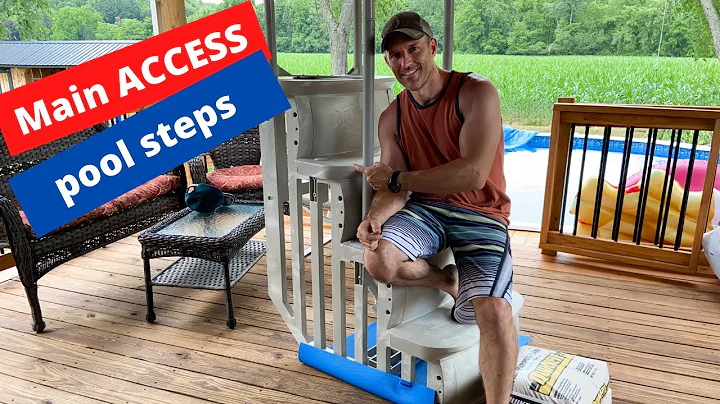Protecting Patients and Medical Professionals: The Breakthrough in Healthcare Safety
Table of Contents
- Introduction
- The Significance of Healthcare Safety
- Understanding the Complexity of Cancer
- The Evolution of Cancer Treatment
- Hazards of Chemotherapy Drugs
- The Need to Limit Exposure to Hazardous Drugs
- The Introduction of Closed System Transfer Devices
- EquiShield: A Breakthrough in Patient and Healthcare Worker Safety
- The Efficacy of EquiShield: Findings of a Study
- Implementation of Safety Standards in the Workplace
- Conclusion
- Additional Resources
Introduction
In the field of healthcare, safety is paramount—both for patients and the medical professionals who care for them. A particular concern is the potential exposure of healthcare workers to hazardous drugs in the workplace. This issue is especially crucial in the case of chemotherapy drugs, which can cure cancer but also have the potential to cause harm. To address this problem, innovative solutions are being developed and implemented to protect patients and healthcare workers alike.
The Significance of Healthcare Safety
With over five million healthcare workers at risk of exposure to hazardous drugs in the United States alone, it is imperative to prioritize healthcare safety. The consequences of such exposure can range from adverse health effects like infertility, birth defects, and miscarriages to more severe outcomes such as cancer. To safeguard the well-being of both patients and medical professionals, proactive measures must be taken to minimize exposure to these hazardous substances.
Understanding the Complexity of Cancer
Cancer is not a single disease but rather a diverse collection of thousands of different types. Consequently, the drugs used to treat cancer are multifaceted, with over 400 available options today. Different combinations, dosages, and timings, coupled with treatments like surgery and radiation, are tailored to each specific type of cancer. However, it is essential to remember that while these drugs offer potential benefits, they also come with risks.
The Evolution of Cancer Treatment
The landscape of cancer treatment has dramatically transformed over the years. From a limited selection of 30 drugs three decades ago, medical practitioners now have a vast array of options at their disposal. This expansion in available drugs underscores the need for safety measures that address the potential risks associated with hazardous drug exposure.
Hazards of Chemotherapy Drugs
Chemotherapy drugs, although life-saving, can pose significant risks to both patients and healthcare workers due to their potential toxicity. While these drugs have the power to cure cancer, they also hold the capacity to induce adverse health effects. It is crucial, therefore, to limit the exposure of healthy individuals—particularly medical professionals—to these hazardous drugs.
The Need to Limit Exposure to Hazardous Drugs
Healthcare facilities have recognized the urgency of minimizing exposure to hazardous drugs, and new safety protocols have been developed and implemented. Closed system transfer devices have emerged as crucial tools in this endeavor. These devices aim to minimize the risk of exposure for all parties involved, including technicians, nursing staff, patients, and their loved ones.
The Introduction of Closed System Transfer Devices
One such closed system transfer device is EquiShield. This device, widely utilized in healthcare facilities, is employed in the process of transferring medication from vials to IV bags for patients. By utilizing closed systems like EquiShield, the minute aerosolization that occurs when puncturing a vial can be further minimized, ensuring safety for all.
EquiShield: A Breakthrough in Patient and Healthcare Worker Safety
EquiShield acts as a closed system transfer device, offering a convenient way to draw up and prepare drugs in a pharmacy setting. This component is then used by nurses to administer the medication to patients. The system ensures that the drug remains sealed and contained throughout the process, from preparation to administration and disposal, protecting both healthcare workers and patients.
The Efficacy of EquiShield: Findings of a Study
A study conducted at Carmen Oz Cancer Institute compared the use of EquiShield syringes to traditional hospital syringes with closed system transfer devices. The study found that EquiShield syringes exhibited no contamination whatsoever, offering an additional layer of assurance to healthcare professionals. With over 12,000 new patients annually, the implementation of such safety measures is crucial given the substantial volume of chemotherapy doses prepared and administered.
Implementation of Safety Standards in the Workplace
Healthcare facilities like Carmen Oz Cancer Institute prioritize patient and employee safety by actively implementing new safety standards. With the potential exposure to hazardous drugs being a prevalent concern, ongoing efforts are made to protect both patients and healthcare workers from any potential contaminants or risks.
Conclusion
The importance of healthcare safety cannot be overstated, particularly when it comes to exposure to hazardous drugs. With the evolution of cancer treatment and the widening range of available drugs, the risks associated with their use necessitate proactive measures to mitigate potential harm. Closed system transfer devices like EquiShield offer a vital solution for minimizing exposure and ensuring the safety of both patients and healthcare workers in the ever-evolving healthcare landscape.
Additional Resources







